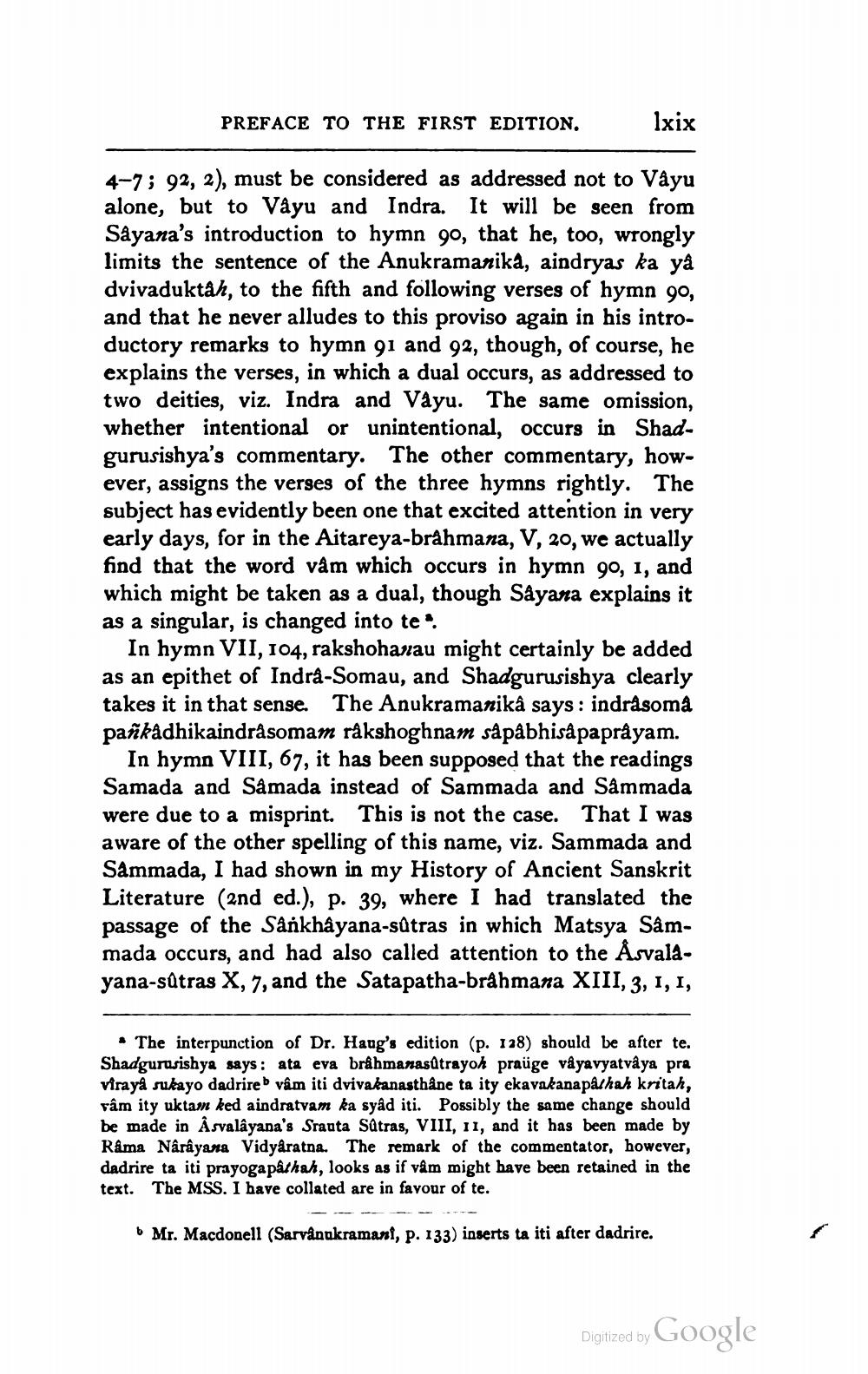________________
PREFACE TO THE FIRST EDITION.
Ixix
4-7; 92, 2), must be considered as addressed not to Vayu alone, but to Vayu and Indra. It will be seen from Sayana's introduction to hymn go, that he, too, wrongly limits the sentence of the Anukramanika, aindryas ka ya dvivaduktåh, to the fifth and following verses of hymn 90, and that he never alludes to this proviso again in his introductory remarks to hymn 91 and 92, though, of course, he explains the verses, in which a dual occurs, as addressed to two deities, viz. Indra and Vàyu. The same omission, whether intentional or unintentional, occurs in Shadgurusishya's commentary. The other commentary, however, assigns the verses of the three hymns rightly. The subject has evidently been one that excited attention in very early days, for in the Aitareya-brahmana, V, 20, we actually find that the word vâm which occurs in hymn 90, 1, and which might be taken as a dual, though Sayana explains it as a singular, is changed into te..
In hymn VII, 104, rakshoharau might certainly be added as an epithet of Indra-Somau, and Shadgurusishya clearly takes it in that sense. The Anukramanikå says: indrasoma pankadhikaindråsomam råkshoghnam såpabhisåpaprayam.
In hymn VIII, 67, it has been supposed that the readings Samada and Samada instead of Sammada and Sammada were due to a misprint. This is not the case. That I was aware of the other spelling of this name, viz. Sammada and Sammada, I had shown in my History of Ancient Sanskrit Literature (2nd ed.), p. 39, where I had translated the passage of the Sankhayana-sútras in which Matsya Sammada occurs, and had also called attention to the Asvalayana-sútras X, 7, and the Satapatha-brâhmana XIII, 3, 1, 1,
• The interpunction of Dr. Haug's edition (p. 128) should be after te. Shadgurusishya says: ata eva brahmanastrayoh praüge våya vyatvậya pra viraya sukayo dadrire vâm iti dvivakanasthåne ta ity ekavakanapathah kritah, râm ity uktam ked aindratvam ka syâd iti. Possibly the same change should be made in Åsvalâyana's Srauta Satras, VIII, 11, and it has been made by Rama Narayana Vidyaratna. The remark of the commentator, however, dadrire ta iti prayogapathah, looks as if vam might have been retained in the text. The MSS. I have collated are in favour of te.
Mr. Macdonell (Sarvanukramani, p. 133) inserts ta iti after dadrire.
Digitized by Google




